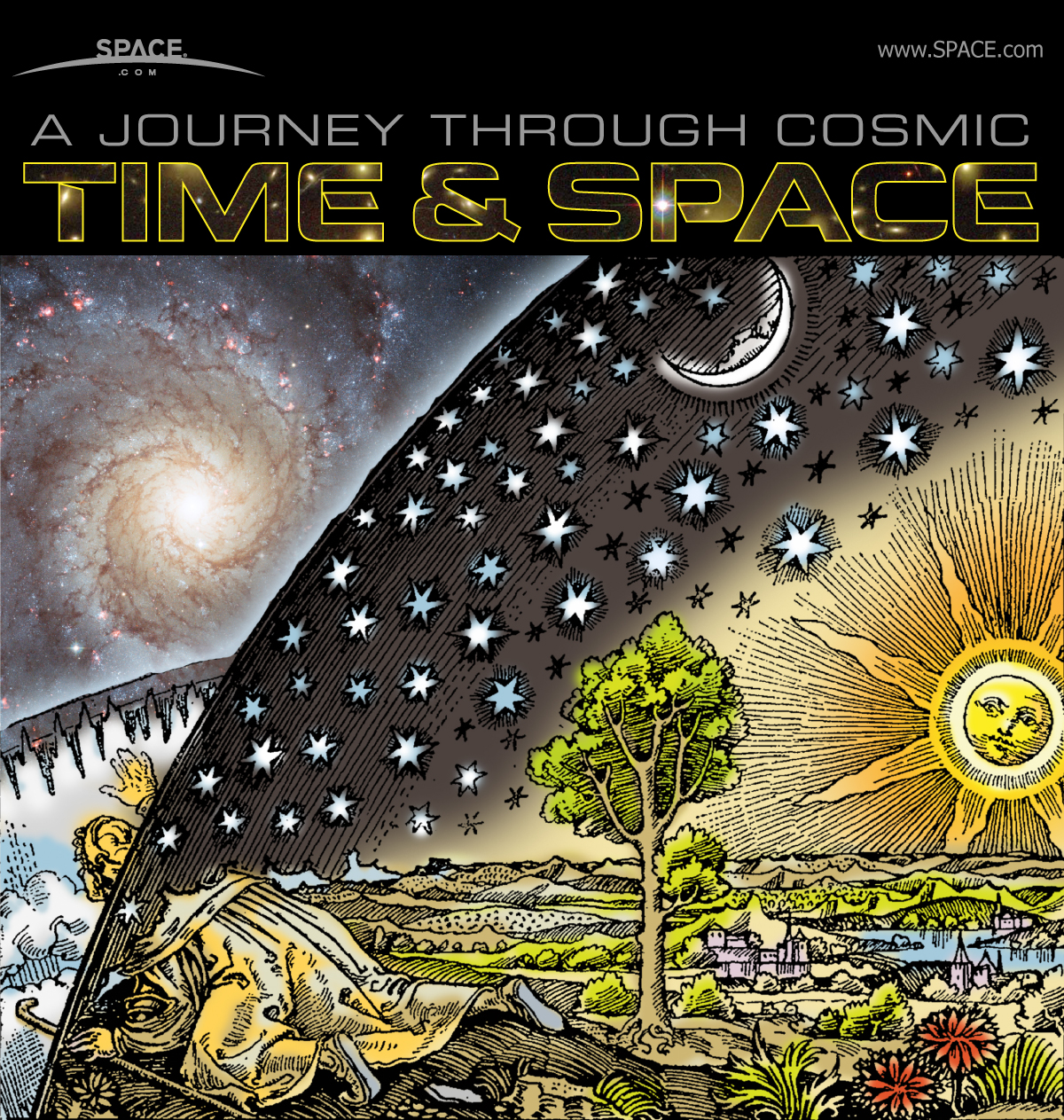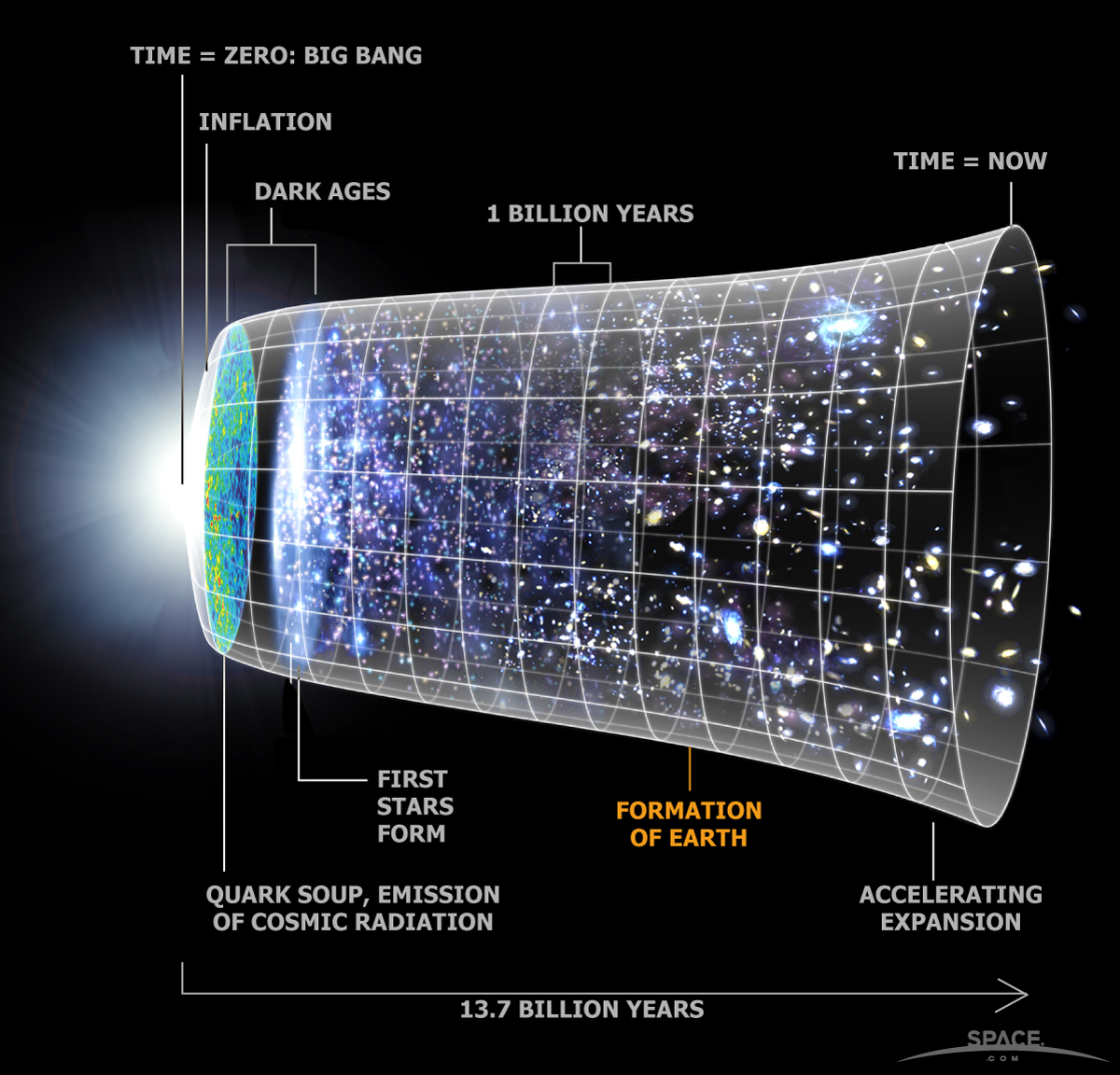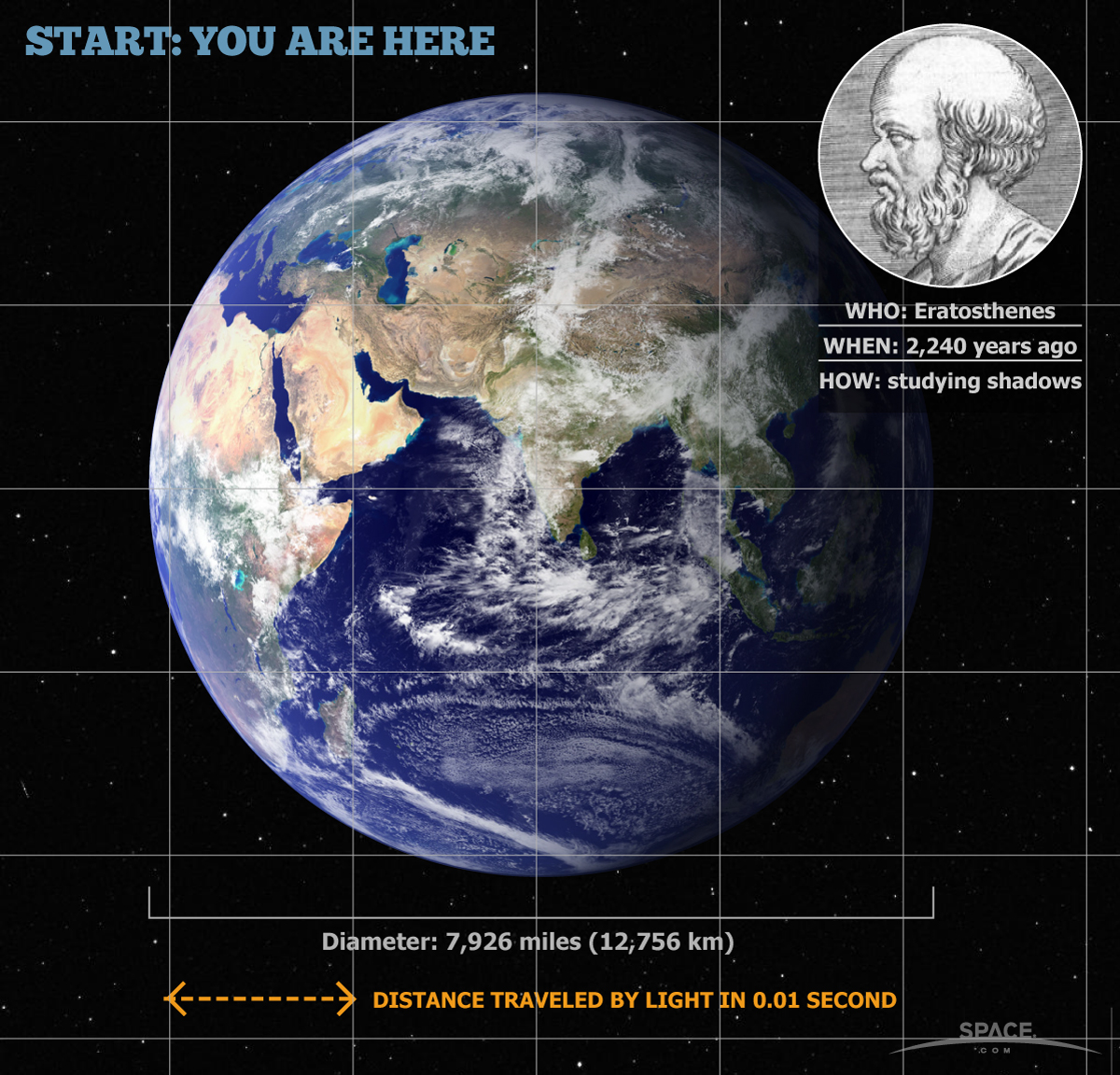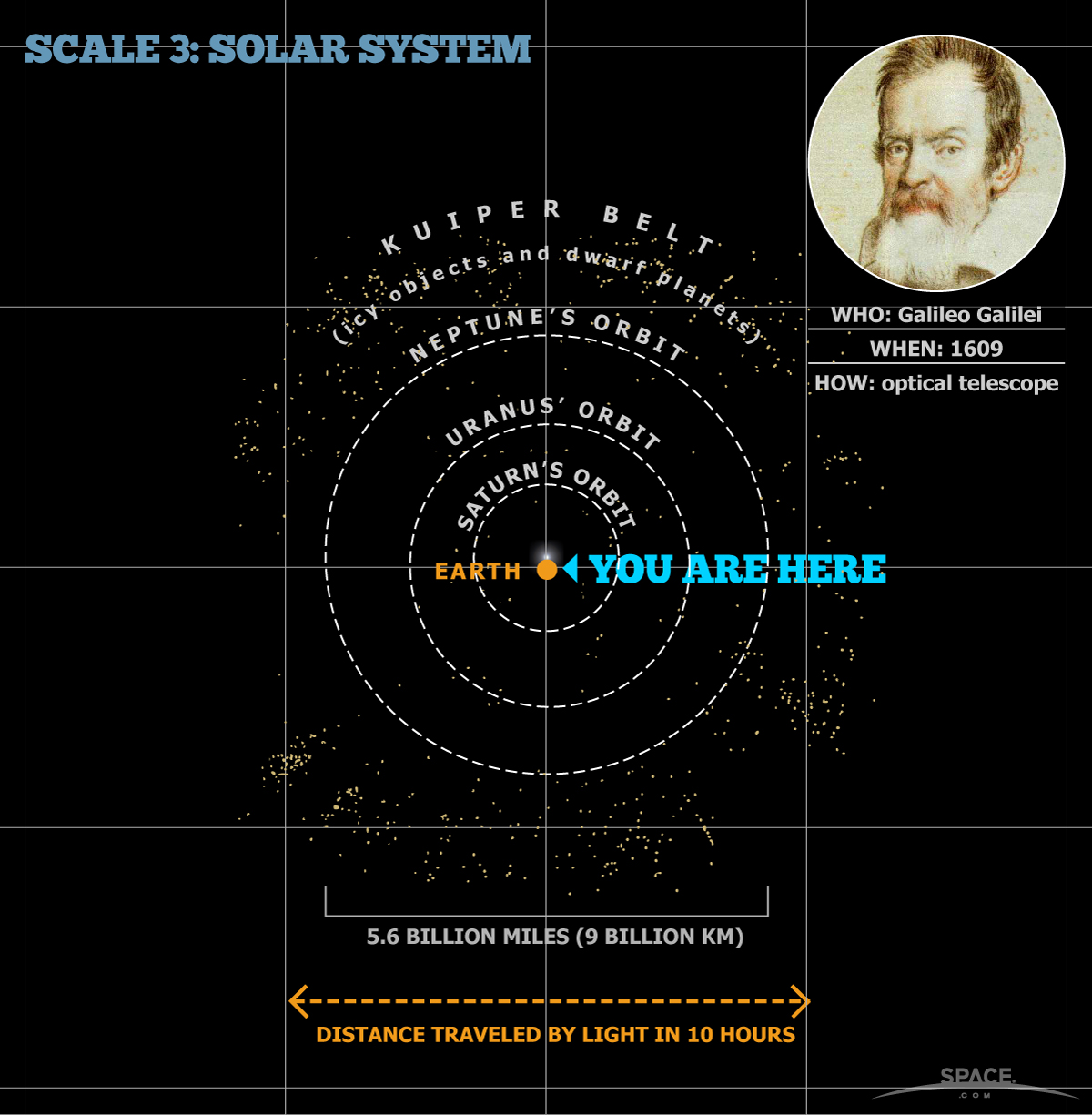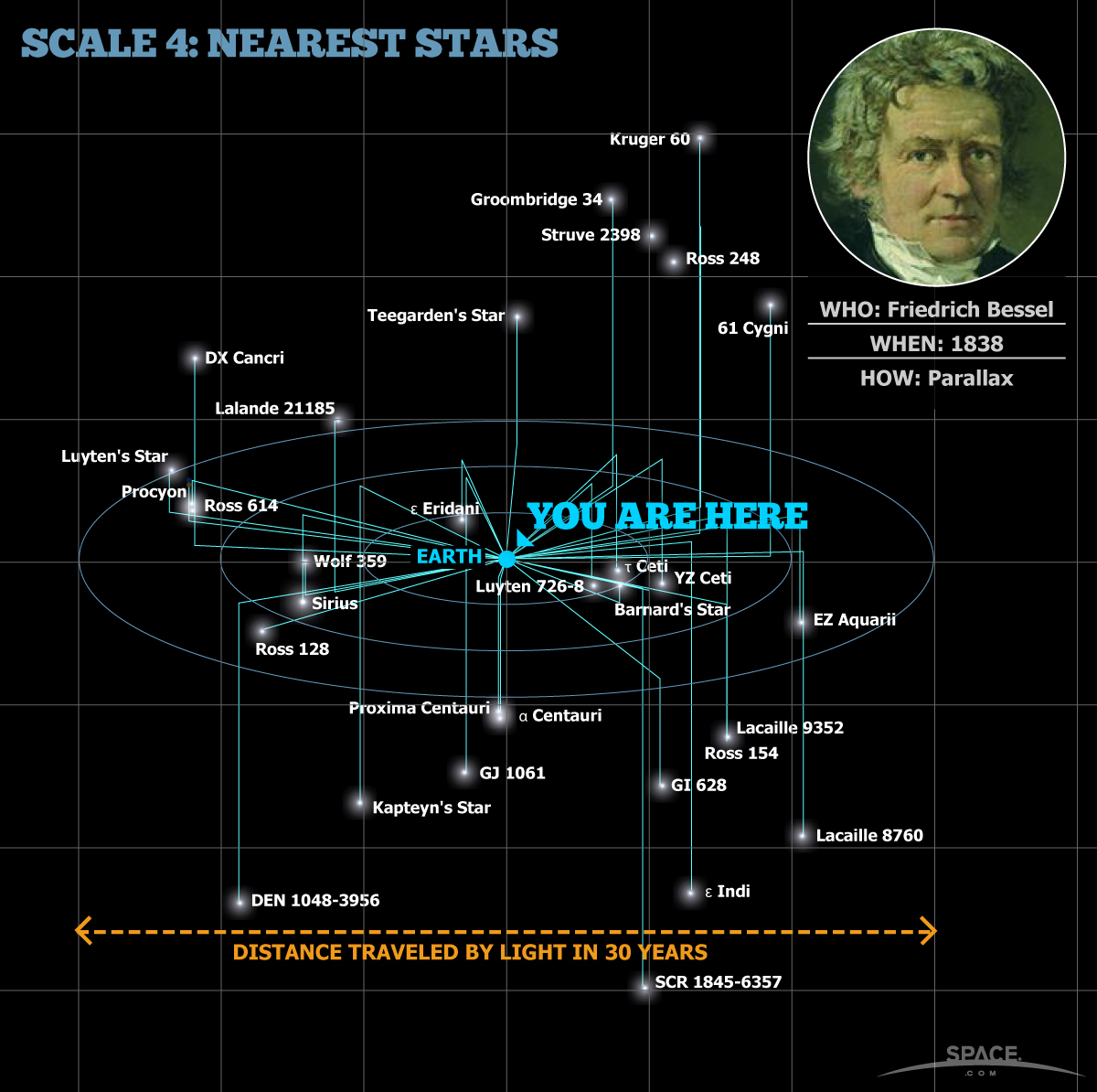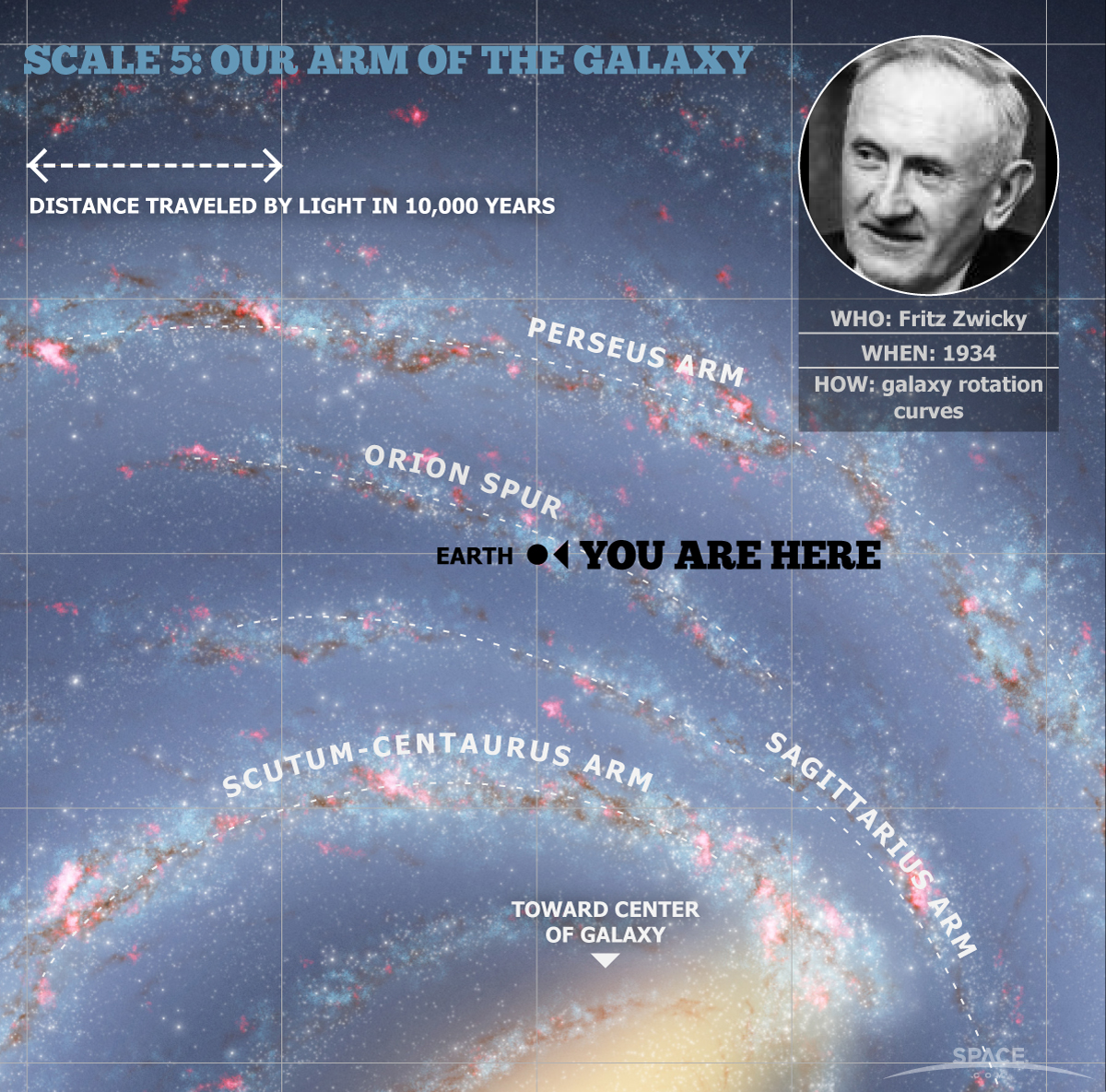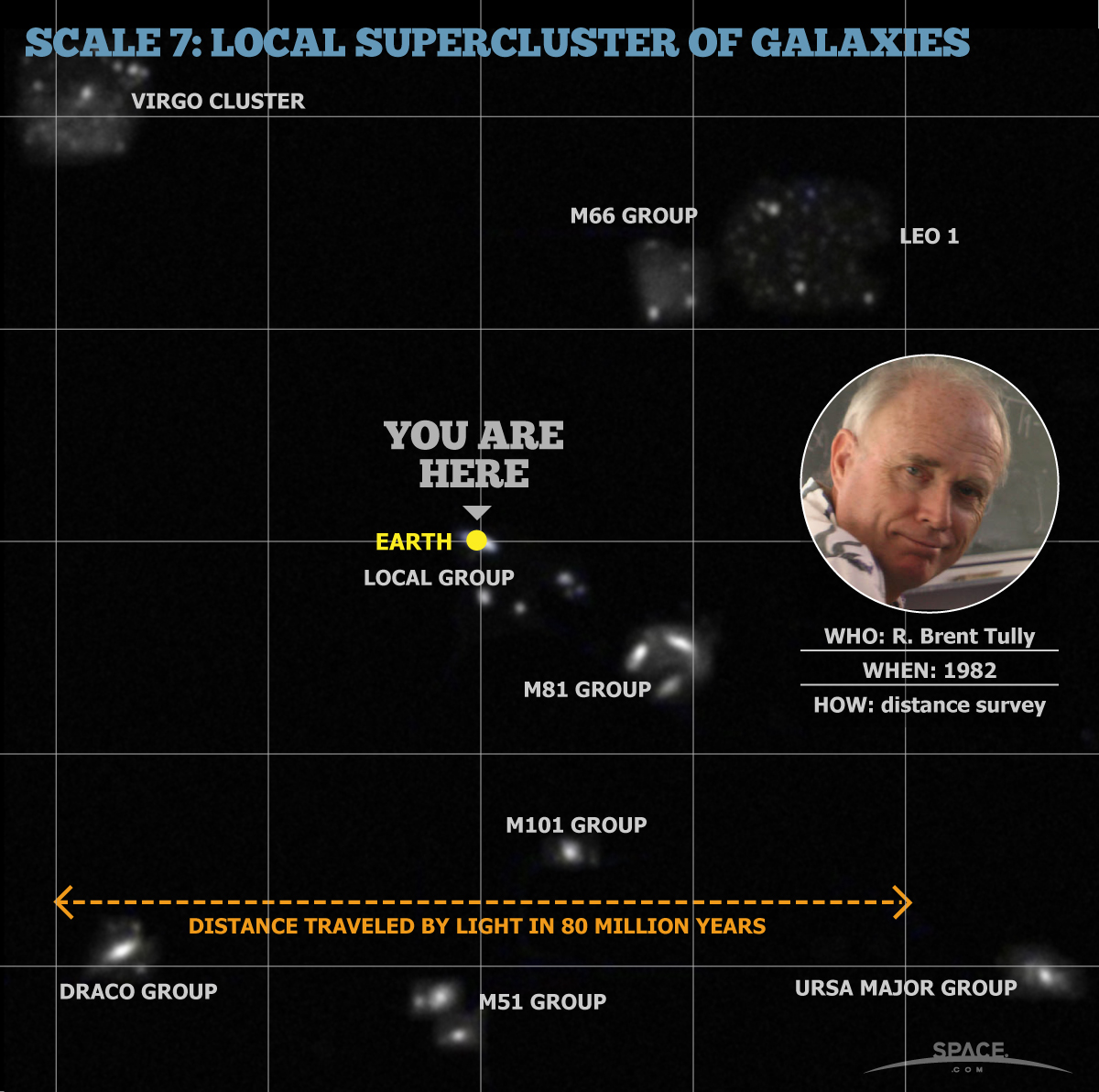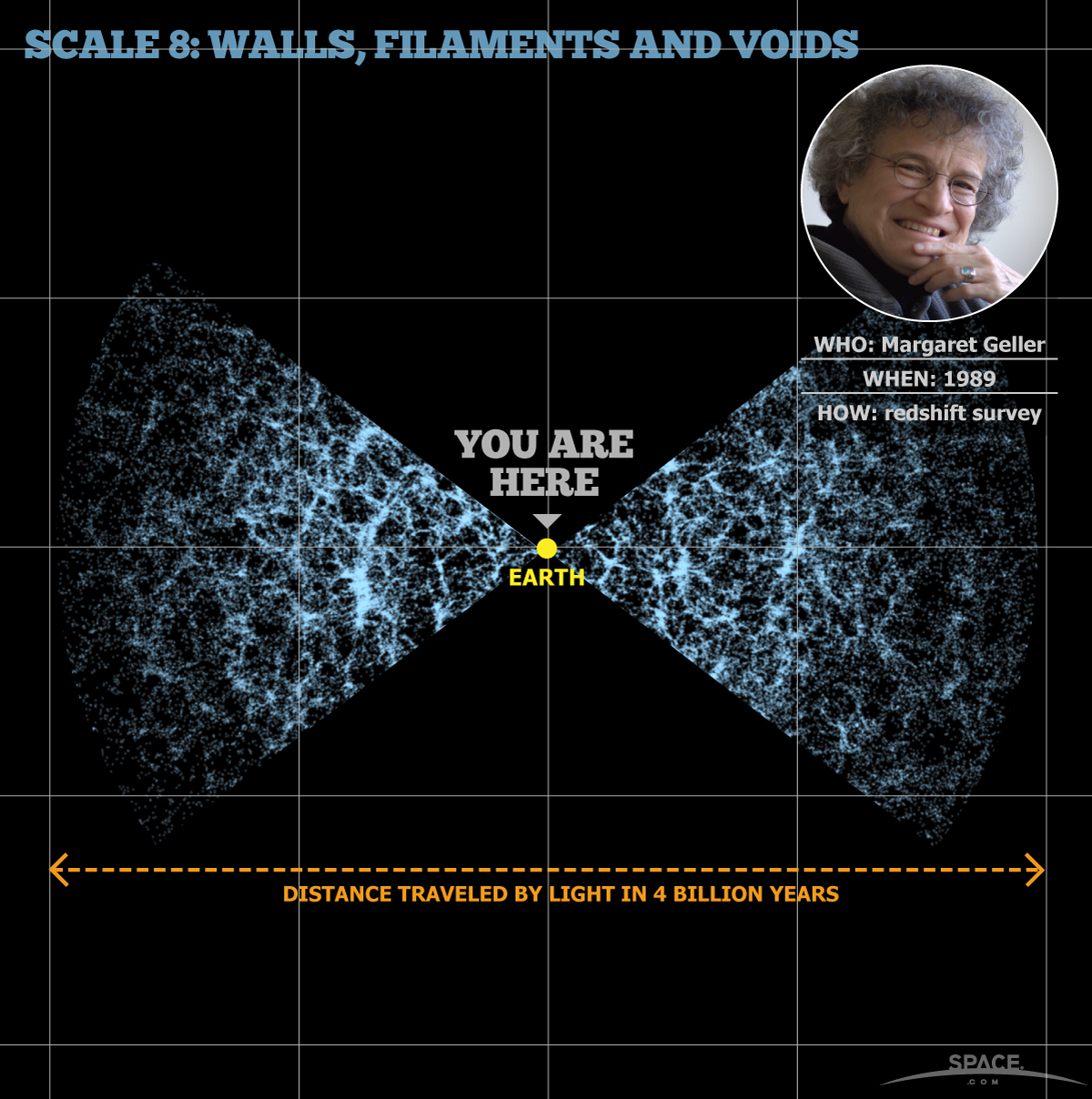
The Illuminated Universe
Our journey toward understanding the nature of our universe began thousands of years ago and had its roots in religion and philosophy. Around 2,300 years ago, careful observers in the Mediterranean deduced that the Earth must be round and must orbit the sun.
With no way for these early theories to be proved correct, however, they could not stand against the more flattering notion that the Earth was at the center of everything and that the cosmos existed to support human life and destiny.
When Italian astronomer Galileo Galilei invented the astronomical telescope some 1,900 years later, it was finally possible to make precise observations about the planets and stars. A science of the structure and history of the entire universe, called "cosmology," emerged. FIRST UP: What We Know Now >>
It took quite a bit more than seven days to create the universe as we know it today. SPACE.com looks at the mysteries of the heavens in our eight-part series: The History & Future of the Cosmos. This is Part 4 in that series.
The Whole Enchilada
Our current understanding of the history of the universe is visualized above, with time running from left to right. We think that immediately after its creation at the time of the Big Bang, the universe expanded dramatically – an event called inflation.
Our Earth formed when the universe was around 9.2 billion years old. The expansion of the universe continues today and is accelerating. In this series of infographics, we will first look at the structure of the universe at larger and larger scales and find out a little about how we came to our current understanding of it. In the second part of our sequence, we will begin with the Big Bang and move forward in time to see how the universe has evolved to the present day. NEXT: First Stop, Earth >>
The Earth Is Round
Our first stop is the planet we call home. The knowledge that the Earth is shaped like a ball is actually quite old.
About 2,500 years ago, Greek travelers reported that different constellations were visible in the sky when one went far to the north or south. Keen observers also would have noticed that during an eclipse of the moon, the shadow cast by the Earth has a round edge. A few centuries later, the scholar Eratosthenes estimated the size of the Earth by noting the difference between the lengths of shadows cast by the sun in locations a few hundred miles apart.
By assuming that the sun was so far away that its rays of light were parallel, Eratosthenes could use simple geometry to calculate the circumference of the Earth. It is not known how accurate his measurement was, but it may have been off from the true figure by no more than a few percentage points. NEXT: The Solar System >>
Earth Is a Planet
Now we pull back to see the Earth in the context of the inner solar system. Early ideas about the movements of the sun, Earth and planets were derived from theological, astrological and philosophical notions of how God must have ordered the world.
Polish astronomer Nicolaus Copernicus caused an uproar in the mid-1500s by suggesting the Earth moved around the sun and not, as leaders of Christianity taught, the sun around the Earth. For centuries the planets were thought to move because they were embedded in nested "crystal spheres" that rotated around a central point.
However, it was noted in the 16th century that comets moved in such a way that would crash them through those crystal spheres. Replacing the spheres was the idea of "epicycles," circles superimposed on circles, mathematically influencing each other to result in the observed planetary motions.
Finally, in 1609, German mathematician Johannes Kepler published his theories of planetary motion, which established that bodies in our solar system move in orbits shaped like ovals rather than circles. NEXT: Planets Are Other Worlds >>
The Planets Are Worlds
From the earliest eras of human pre-history, the entire universe was thought to encompass only the elements visible to the naked eye: Earth, its moon and sun, five points of light that moved and were called "planets," plus a distant sphere upon which the stars and the glowing band of the Milky Way were embedded.
Theories of astrology and, later, astronomy were devised to explain the movements of these celestial objects, but their true nature could only be guessed at. When in 1609 the Italian astronomer Galileo finally trained a crude telescope on the heavens, he discovered that the planets were other worlds. Several of these worlds were found to have moons of their own.
With the aid of the telescope, previously unknown planets were discovered in our solar system: Uranus in 1781 and Neptune in 1846. With the telescope it became possible to study smaller bodies such as comets and asteroids, and also the stars and nebulas on the distant celestial sphere. NEXT: A Sea of Stars >>
The Stars Are Suns
In the 17th century, the invention of the telescope by Galileo and the discovery of the laws of motion by Kepler prompted the realization that stars were just like the sun, all obeying the same laws of physics. In the 19th century, spectroscopy — the study of the wavelengths of light that are emitted by objects — made it possible to investigate the gases that stars are made of.
Scientists also figured out in the 19th century how to measure the distances to stars. When an object is viewed from different vantage points, the object appears to shift relative to the more distant background. The shift is called "parallax." As the Earth orbits the sun, it provides a changing vantage point for observing the stars. Since the stars are so much more distant than objects in our own solar system, the parallax shift is very small and hard to measure.
The German mathematician and astronomer Friedrich Bessel was the first to successfully measure the parallax of the star 61 Cygni and estimated its distance from Earth to be 10.4 light-years. (Later estimates adjusted this distance to 11.4 light-years.) NEXT: The Galaxy and Dark Matter >>
A Galaxy Held Together by Dark Matter
The layout of our galaxy is difficult to figure out from our vantage point, which is embedded in it. By studying the shapes of distant galaxies and carefully measuring the objects that we see in our own galaxy, we have inferred that ours is a barred-spiral galaxy.
A central bar-shaped core composed of stars (and harboring an extremely large black hole) is surrounded by spiraling arms, also formed of stars as well as gas and dust. We are located in a spur, or branch, that stretches between major spiral arms. The exact configuration of spiral arms is still debated by astronomers, but a recent survey found that our Milky Way galaxy has two major arms, which branch out into four arms toward the outside.
The spiral arms of our galaxy are thought to be a kind of density wave that travels around the flat disk. Material bunches up, and stars are formed along the arms. Everything in the galaxy orbits around its center, and the arms are not solid structures. Our solar system travels into and out of the spiral arms as it orbits.
While studying the rotation of galaxies, it was noted that they do not rotate as we would expect them to based on the gravitational pull of the matter we can see. Swiss astronomer Fritz Zwicky suggested in 1934 that there must be a large amount of invisible, or "dark," matter present, making spiral galaxies more massive than they appear.
Since that time astrophysicists have searched for this dark matter, often speculating that it might consist of exotic particles unlike anything we know on Earth. Current estimates show that our universe is mostly composed of unknown forms of dark matter and dark energy, with familiar atoms being only a tiny fraction of the total. NEXT: Galaxies Filled With Stars >>
Breaking space news, the latest updates on rocket launches, skywatching events and more!
Galaxies Are Made of Stars
The Milky Way, a faint ribbon of light that spans the sky, has been known throughout history. Its true nature was not discovered until the 17th century, when Galileo Galilei studied the Milky Way with a telescope and determined that the ribbon was composed of a multitude of stars. Small fuzzy patches of light can be seen in the sky; these were called nebulae.
By the 18th century it was speculated that the Milky Way was a huge system of stars bound together by gravity, but the nature of the nebulae remained unknown. They could have been small clouds of gas within the Milky Way, or perhaps they were external to our galaxy. It could not be proved whether or not the Milky Way constituted the entire universe.
Using the newly constructed 100-inch telescope at Mount Wilson Observatory in California, American astronomer Edwin Hubble studied stars called Cepheids, which brighten and dim in a pattern related to their intrinsic brightness, making them suitable for use as a yardstick in estimating cosmic distances. In a 1925 paper, Hubble concluded that some of the nebulae were external to the Milky Way, and were giant galaxies in their own right, revealing a universe much larger than our own home galaxy. NEXT: Universe Gets Organized >>
Massive Organization
It was first noticed in the latter half of the 19th century that there is a large group of nebulas in the constellation Virgo. Later it was discovered that these nebulae are separate galaxies external to our Milky Way.
One hundred years later, astronomers speculated that the apparent alignment of these galaxies might indicate a higher level of cosmic structure, variously dubbed a "metagalaxy" or "supercluster." In 1982 astronomer R. Brent Tully published an analysis of the distances to the supercluster member galaxies, showing that they were indeed part of a larger organization.
The distances were determined by noting the redshift of the spectra of light from the galaxies. (See "Time Zero: The Big Bang" later in this gallery for a fuller explanation of redshift.) NEXT: Largest Structures in Space >>
The Largest Structures in Space
The largest structures that we know of are the galactic filaments – also called supercluster complexes – that surround vast voids in space. The galaxies in a filament are bound together by gravity.
When the first of these structures was discovered by Margaret Geller and John Huchra in 1989, it was dubbed "the Great Wall." A much larger structure, the "Sloan Great Wall," was discovered in 2003 by J. Richard Gott III and Mario Jurić.
Current research into the large-scale structure of the universe utilizes data gathered by redshift surveys such as the Sloan Digital Sky Survey. These efforts use digital camera sensors to photograph regions of the sky, capturing millions of distant objects along with the data needed to map them in 3-D space. NEXT: The Farthest We Can See >>
The Farthest We Can See
The observable universe is everything that we can detect. It is a sphere 93 billion light-years in diameter, centered on Earth. We cannot perceive the entire universe at once, due to the slowness of the speed of light compared with the vast scale of the universe.
As we look out into space, we see objects as they were at earlier and earlier times in history. Also, because of the accelerating expansion of the universe, distant objects are much farther away than their age would have us think. For example, the edge of the observable universe is estimated to be about 46 billion light-years away, even though the universe itself is only 13.7 billion years old.
The true extent of the universe is unknown. It could be much bigger than the observable universe – perhaps even infinite in size. However, light from the most-distant regions would never be able to reach us; the space it must pass through is simply expanding too fast.
Our current picture of the observable universe owes a lot to American physicist Alan Guth, who in the 1980s worked out how a universe resembling our own might have emerged from the Big Bang event which created it. Next, we will reset the clock to time zero and see how the universe evolved from its beginning to today. NEXT: The Big Bang >>

Karl's association with Space.com goes back to 2000, when he was hired to produce interactive Flash graphics. From 2010 to 2016, Karl worked as an infographics specialist across all editorial properties of Purch (formerly known as TechMediaNetwork). Before joining Space.com, Karl spent 11 years at the New York headquarters of The Associated Press, creating news graphics for use around the world in newspapers and on the web. He has a degree in graphic design from Louisiana State University and now works as a freelance graphic designer in New York City.
